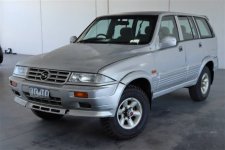I agree, but I think they will look out of place on the Prius.Oooh I reckon theres more pieces de Renault art coming,we can only wait for them to be all connected.


I agree, but I think they will look out of place on the Prius.Oooh I reckon theres more pieces de Renault art coming,we can only wait for them to be all connected.

Oh I don't know, if you keep putting enough bits on at some point it will become more of something else than it is a Prius.I agree, but I think they will look out of place on the Prius.



Yes, electroplating is only a matter of microns! Recently I discovered the importance of my great great grandmother's brother, Dr John Wright, in making modern electroplating a practical proposition: https://finishingandcoating.com/ind...-a-historical-review-of-the-evolution-of-nasf . Unfortunately he was killed at only 36 in a horse and carriage accident.The alloy used for this cast aluminium headlight shell was from a Peugeot engine block and has polished up nicely so far, it'll get a proper buff before I nickle plate it. The golden rule for electroplating seems to be: If you want a shiny end produce you need to start with a well polished and shiny part.
The mounting hardware, lens and rim are OEM. The rivets that you see here are actually M6 bolts with a reshaped and buffed head..but who would ever know.
View attachment 220931
 that it wasn't wise to use the silver coins we had in Australian currency as anodes in the silver plating process. as that is illegal....
that it wasn't wise to use the silver coins we had in Australian currency as anodes in the silver plating process. as that is illegal....It would be dubious if he had been. That was a voluntary migration by his younger brother.Hmm! There's something a little dubious about the notion of selling silver cutlery and then being transported to the colonies.
We should have hoarded those coins!My good lady and I have been watching the UK "repair Shop" series and I was intrigued to see one of their "expert repairers" use an electroplating brush setup to restore silver plated objects to a pristine condition, the whole process looks very simple and easy and does produce an excellent silver finish, apparently uses a brush on silver impregnated solution and an electric low power setup to achieve the good finish. Always emphasizes the need to get a good polish and clean to get the ideal finish.
Don't know how durable the silver finish is, but it would be excellent for silver plating headlight reflectors. I was always interested in setting up an electroplating bath in my backyard. Was warned of course
that it wasn't wise to use the silver coins we had in Australian currency as anodes in the silver plating process. as that is illegal....
Ken
Nice work. I've recently broken the old diecast handle (genuine, vintage shit-metal) and was lucky to replace it quickly with a nicely sand-cast, plated-brass item. It conveniently broke at our Moama Muster as you'd recall, and Kermit's owner actually had the brass one there for the swap meet! You can see the break on the old handle where there's a bead of metallic epoxy cement. I might try and repair it with that and some reinforcing, although Lord knows why.It can be disappointing when you have a genuine period French part that won't accept a nickle plate no matter what you try. I'm thinking it must be either Zamac or a Magnesium alloy of some sort because all it does is fizz and turn black.
But it's good when you can make a new one from aluminium alloy instead, note that I managed to capture the original part number which is only 3mm high. This also shows the difference in casting quality between the original die-casting and my sand casting but for a one-off part, sand casting will do.
View attachment 221628View attachment 221629View attachment 221626

Unbelievably lucky timing! Those diecast ones ALL break, it is just a matter of when. 72 years for mine wasn't too bad. It was definitely the original one.Yes I do recall seeing the tear in your eye as you lamented your loss. I also witnessed the new part you procured without much trouble, it's a good thing we were at a national 4CV event at the time.
Marine grade bronze I suppose. It's lovely as it is.Came across this propeller on Marketplace.
Probably keep you going for a while.
You could even melt it down into smaller props.
Don't know what a 4' prop weighs though, at $1600 he might be dearer than the scrap value.
View attachment 221666